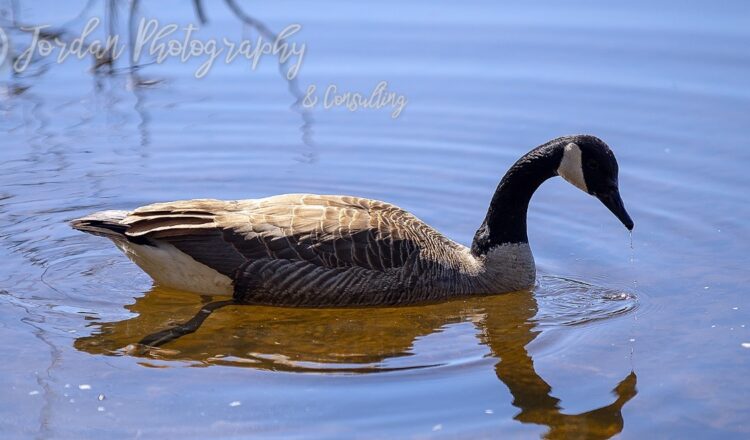By Dan Jordan, Jordan Photography and Consulting
I remember in my youth seeing steady streams of V-shaped formations of Canada geese fly over on their way south each autumn. It was a given back then that the geese were migrating. At least, that’s what we took for granted. Fast forward a few decades, I don’t see nearly as many geese formations flying over plus, there seem to be a lot of Canada geese wintering in WNY. Surely, I reason, they can’t be flying here to winter. Or, are they?
I decided to do some research on the matter and here is what I learned.
First, they are correctly called Canada geese, not the familiar Canadian geese what one hears so often. Although some may be Canadian (home in Canada), many that we see are American (homes in the U.S.).
The range of Canada geese encompasses Canada (go figure) and most of the contiguous United States. There are Canada goose populations in other parts of the world, but most of them were introduced for game hunting purposes. Historically, Canada geese populations migrated in winter. Their breeding grounds are the arctic, much of Canada, and even the northern U.S. states. Their wintering grounds covered the southern U.S. states. Over the course of generations, populations have become more sedentary, meaning they may not migrate at all.
Migrations historically occurred based on the cold weather. Years with early onset of winter weather forced earlier migrations, while milder early-winters allowed populations to remain in their home territories longer. Many scientists believe that climate change is affecting the migratory habits of geese. Milder winters put less pressure on the geese, as their food supply in their home territories remains available longer.
Having lived along the Allegheny River for many years, I started noticing Canada geese around all year. When I started thinking about it, I realized that I was seeing (and hearing) less of the migratory V-shaped geese patterns in the sky too. We call them honkers, as in here comes a flock of honkers. We can usually hear them before we see them.
So, my conclusions about migrations are:
- Many Canada geese call the northern states home (breeding territory) and do not migrate, unless there is a particularly intense winter season.
- Some of the more-northern geese populations may be wintering here. Who know that WNY would be considered temperate?
- Other populations still migrate, and the northern ones may skip right over us for warmer climes.
Here are some facts and figures about the Canada goose:
- Their cold breeding territories are chosen because of the relative lack of predators.
- The Canada goose is the largest member of the goose family.
- They can weigh up to 20 pounds!
- They can reach a length of 43 inches with a maximum wingspan of 6 feet.
- They are monogamous, taking a mate at 2 years of age, for life.
- They live from 10-24 years.
- Each goose has between 10,000 and 25,000 feathers, most of which are down feathers used for insulation.
- Canada geese are herbivores, eating plants as a staple but will eat insects and even small fish when the opportunity presents itself.
- When/if they migrate, they fly in V-shaped patterns which is energy efficient. The leader of the V incurs the most wind resistance and will drop back and let another lead when tired. Think of drafting in a bicycle race as a comparison.
- Canada geese can fly at extremely high altitudes, as high as 29,000 feet. They are the second most damaging bird for airplane strikes (only the turkey vulture is more damaging).
- In the early 1900’s their population was in danger due to overhunting and habitat loss.
Now that you are now a Canada goose expert, let’s look at some photos. This first photo was taken in 2018 in the front lawn of St. Bonaventure University, showing some geese mingling with a family of deer.
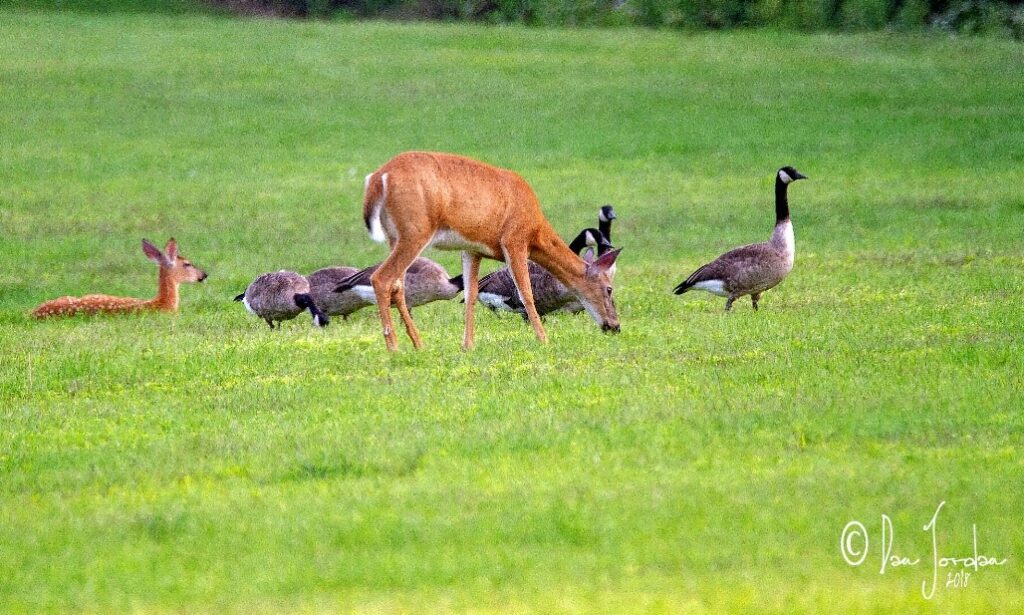
The next shows some young goslings from 2022.
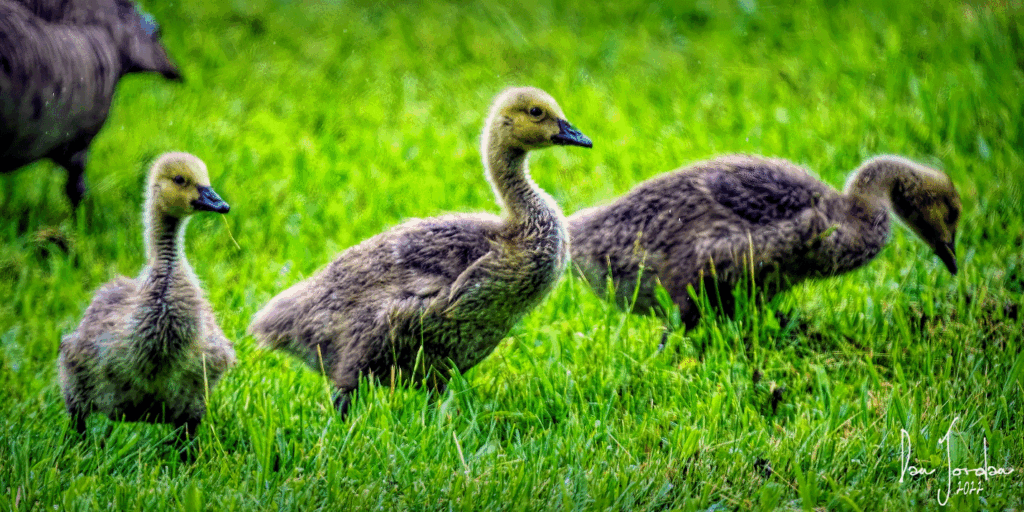
The next is from Montezuma National Wildlife Refuge showing migratory geese.
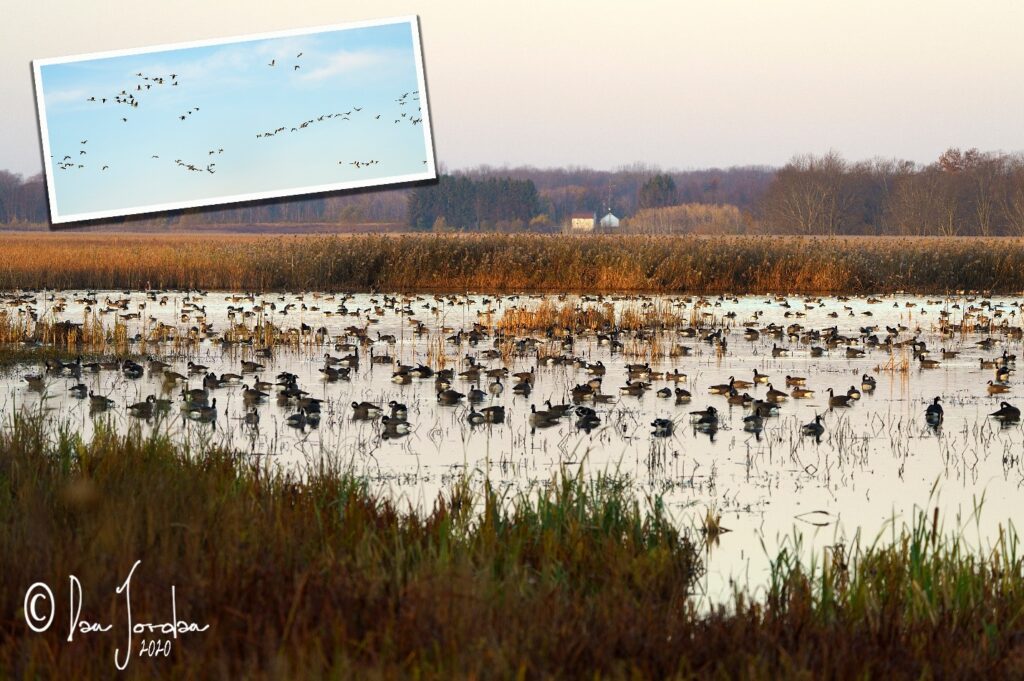
The next photo from Rushford Lake, shows a large number of maturing young geese with a couple of adults.
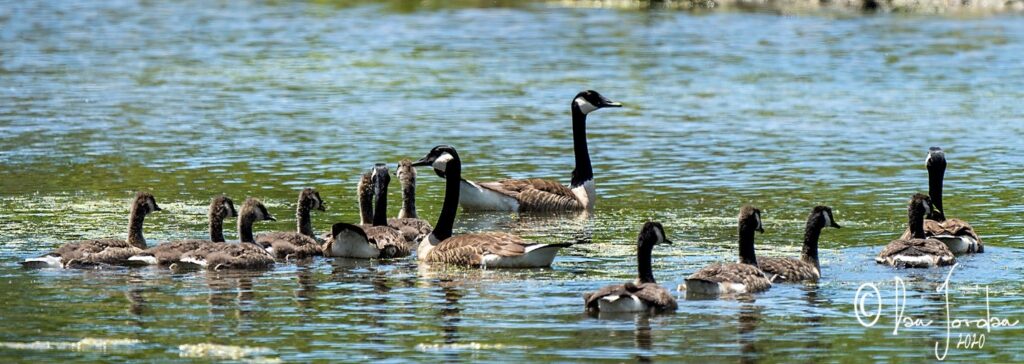
And the last two photos were taken just this week. First one was in Alma, NY, showing a very peaceful winter landscape with two adult Canada geese. This one’s getting framed and going up on my wall.
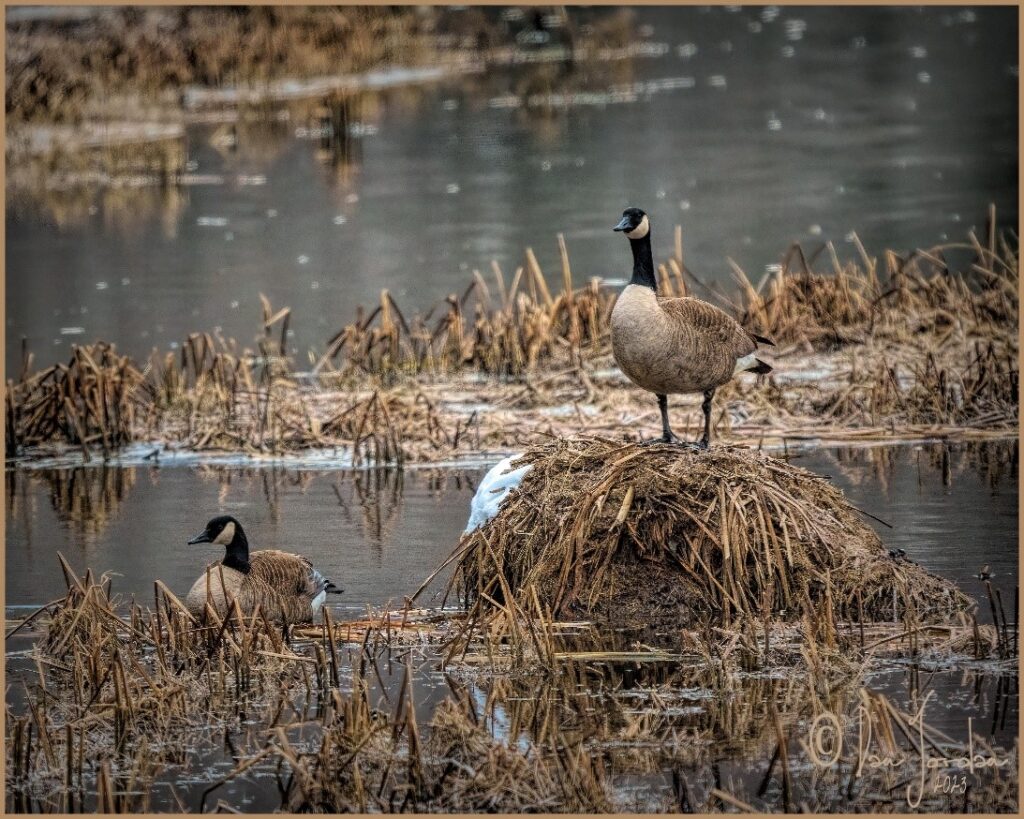
The last, my favorite of all my geese photos, shows two geese taking flight at the Keeney Swamp, near Birdsall, NY.
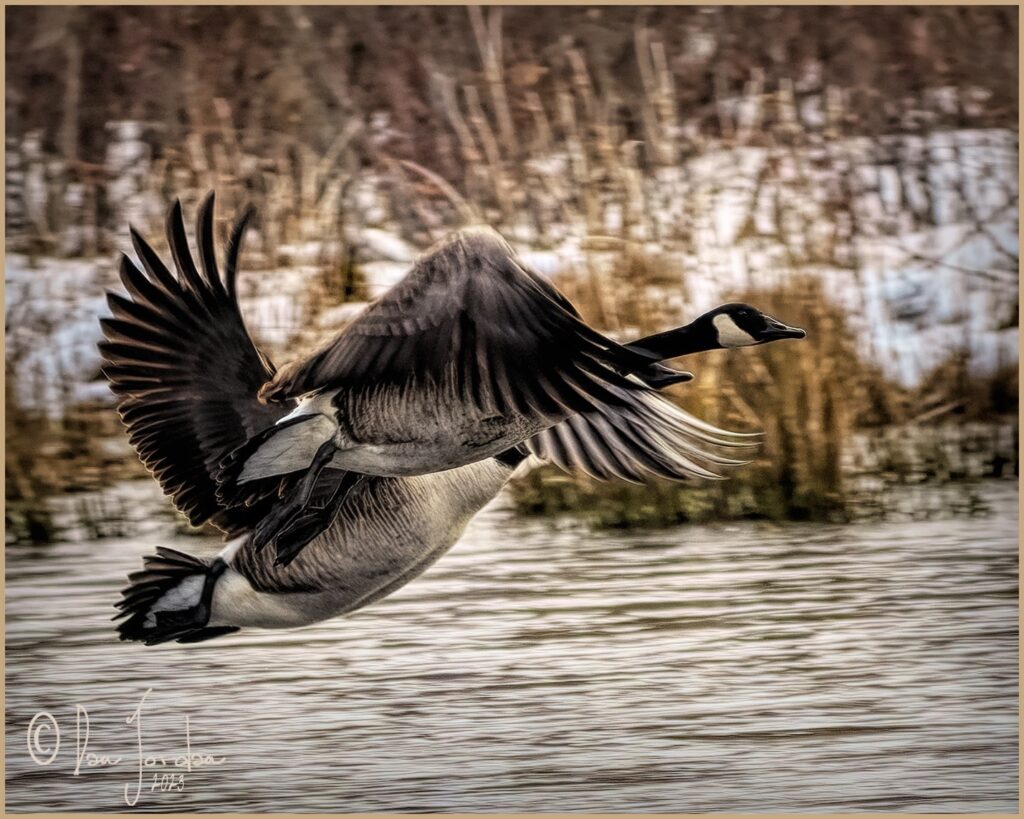
You probably don’t have to “keep your eyes open” for the prolific Canada goose. They seem to be everywhere. But now you can look at them in a different light. Look for the wintering geese and understand that once migratory, they have adapted to the changing conditions and have made their winter homes right here.



